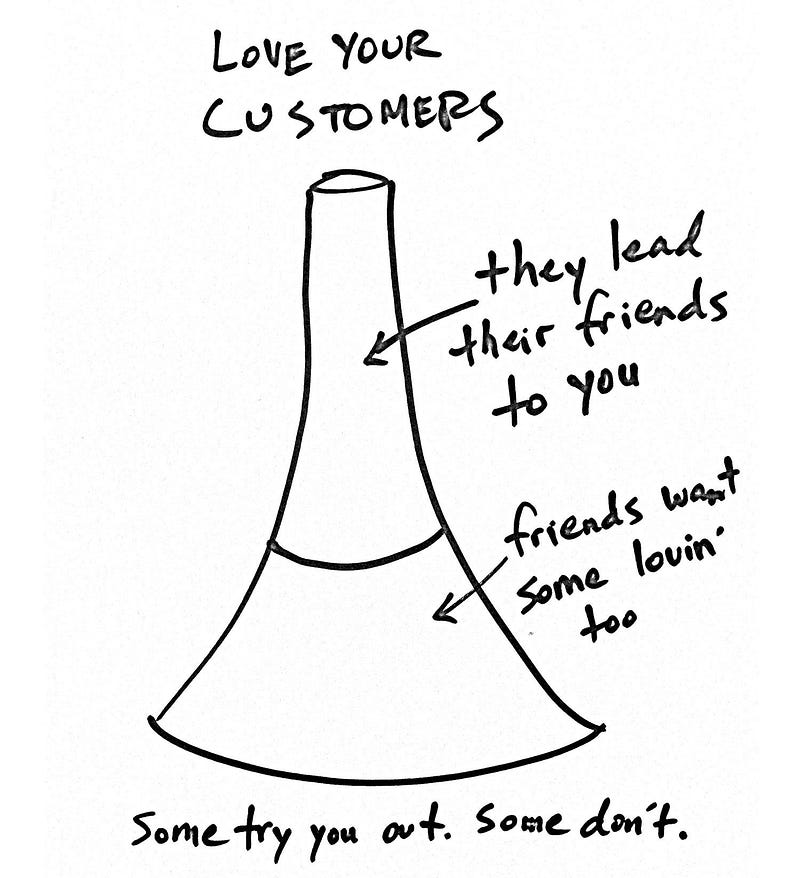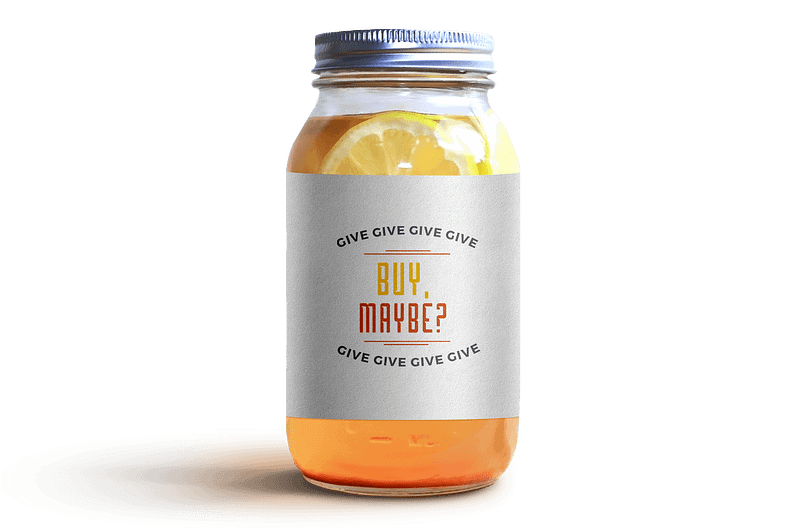
On my way to the co-working space, I grabbed my mobile to read the same Slack message yet another time:
Ali, that’s good, but we should look at what converts.
It never failed. It was either a client or a colleague on the same marketing team. There was always someone who never missed the perfect opportunity to remind me of the importance of a conversion funnel:
- Get a bunch of website visitors,
- then do something to turn some of them into leads — aka people who have shown interest in your business,
- and then do something else to turn those leads into customers.
That ‘do something’ part was exactly what stressed me out the most every time I was reminded to stop wasting time on things that don’t sell and to get my focus back on what converts.

In the fancy world of A/B tests and viral factors, we loved to call ourselves growth hackers.
But weren’t we supposed to build products people love instead of wasting our lives optimising the color of damn buttons to increase signups by 0.0123456789 percent?
Crew’s Mikael has an interesting take on chasing those short-term wins:
Most people are digging down and trying to optimise what they already have — trying to get that extra three to four percent increase. But the more time you spend doing that, the less time you spend stepping back and looking for the bigger opportunities. The ways that you can see 100 percent or 1000 percent increases overnight.
Tracking every single action people take on our website sounds great. Optimising funnels is perfect.
But wouldn’t it be better if we spent the same effort in delighting our customers, given that at startups we have only limited resources?
I can’t tell you why our business is growing
We’ve grown a lot in the past year, but I can’t tell you why we’re actually growing. Sure, every time someone walks in the door, we give them the best possible experience and we really do make them happy. But why do more new people walk in each day? I don’t really know.
That’s Ben, founder of Huckleberry Bicycles, who has no clue why his bike business is booming despite being located in a bad neighborhood in San Francisco.
It’s the obvious nature of a retail business, you might be thinking. And you’re right. In offline businesses, you can’t really track conversions even when you buy ads.
Remember John Wanamaker? He was the first retailer in history to place a newspaper ad, in 1874. And when asked about the return on his advertising investment, all he could say was:
Half the money I spend on advertising is wasted; the trouble is I don’t know which half.
History has seen countless businesses like John Wanamaker’s, ones that didn’t have the technology to track their conversions. Yet many of those businesses managed to turn into phenomenal success stories that we still study in business schools.
While they couldn’t tell us why exactly their businesses were growing, most of them relied on the same thing Huckleberry’s Ben did with his bike business: making sure to give customers the best possible experience and make them happy.
Can we apply the same approach of those offline businesses to the online world and stop worrying so much about optimisation?
It turns out some of today’s most successful web businesses already do.
Turn the funnel upside down
Last year, 204,383,657,109 emails were sent using Mailchimp.
Yet Ben Chestnut, the founder of the 15-year-old giant email company, has never called himself an email marketer. “…mostly, it’s because I hate funnels. And professional marketers just won’t shut up about those God forsaken things,” he says.
Most of those people who hate funnels tend to have one thing in common: they don’t go for new leads. They go for existing customers — and they go for delighting them.
And those anti-funnelists always remind you that focusing too much on conversions is a short-sighted strategy that is mostly used by those businesses who are running to some sort of an exit, or maybe living quarter-to-quarter.
Yet Mailchimp’s Ben uses an alternative method when it comes to delighting their existing customers. He calls it the ”upside down funnel” approach:

…I just take that funnel, and turn it upside down… This approach works especially well for early-stage businesses. When you start a business, you don’t have a budget for marketing. You probably don’t have the time or talent for it, either. The only thing you’ve got is your passion. That damned, trouble-making passion that suckered you into starting your business in the first place. Take that passion and point it at your customers. Deliver awesome customer service. Delight them. Empower them.
He goes ahead to clarify what he means with empowering your customers:
When I say ‘empower them’ I mean empower them for free, with no strings attached. Because when companies make people sign up and register to download their content, we all know they’re about to feed us into the automation meat grinder…
Replace funnels with extreme value creation
“Empowering your customers for free, with no strings attached” is a pretty interesting concept also because it challenges the popular marketing advice that tells you to give enough value to your audience so that you can ask for a sale after.
However, the short-term revenue that comes with asking for a sale isn’t always worth the trust you lose in the long run. At Crew, we call this act of constant empowering “extreme value creation.”

Of course we still keep an eye on numbers and conversions — hello investors! But nobody on the marketing team runs around the corridors with calculators in their hands doing A/B tests. And no one obsesses about optimisations or chases marginal short-term gains.
It’s complicated
It seems pretty easy, right? Kill your conversion obsession and just focus on delivering value.
Well, it doesn’t work perfectly in the real world, especially when the stakes are so high.
If you can’t measure it, you can’t manage it, investors keep reminding us. The pressure gets even higher when the runway is short, cash is burning fast, and the competitors top all the tech news with their latest funding rounds.
And when the pressure is so high, so is the rush to chase short-term gains that sacrifice long-term benefits.
We block the whole page with email pop-ups that force visitors to sign up to our newsletters. We call it “optimisation” while we proudly talk about our ‘ridiculously successful’ growth hacks. And, of course, we hate to miss the opportunity to write a blog post to brag about “How we boosted conversions by 700 percent.”
In those moments, little do we realise that by engaging in those short-term tactics, we only attract customers who have short-term goals. Little do we take note of those other people we frustrate whose trust we lose.
No matter how strong the temptation to obsess about conversions or short-term hacks, we need to understand that what lies behind sustainable growth is our ability to delight our customers with our dedication to extreme value creation.
Unless you’re dreaming of and rushing to sell your business as soon as possible, it’s the long-term value that makes people talk about your brand with their friends.
What do people tell their friends about you? Is it your button colour that converts 0.0123456789 percent better than the other? Or is it the extreme value you delight your users with?
Get the TNW newsletter
Get the most important tech news in your inbox each week.




